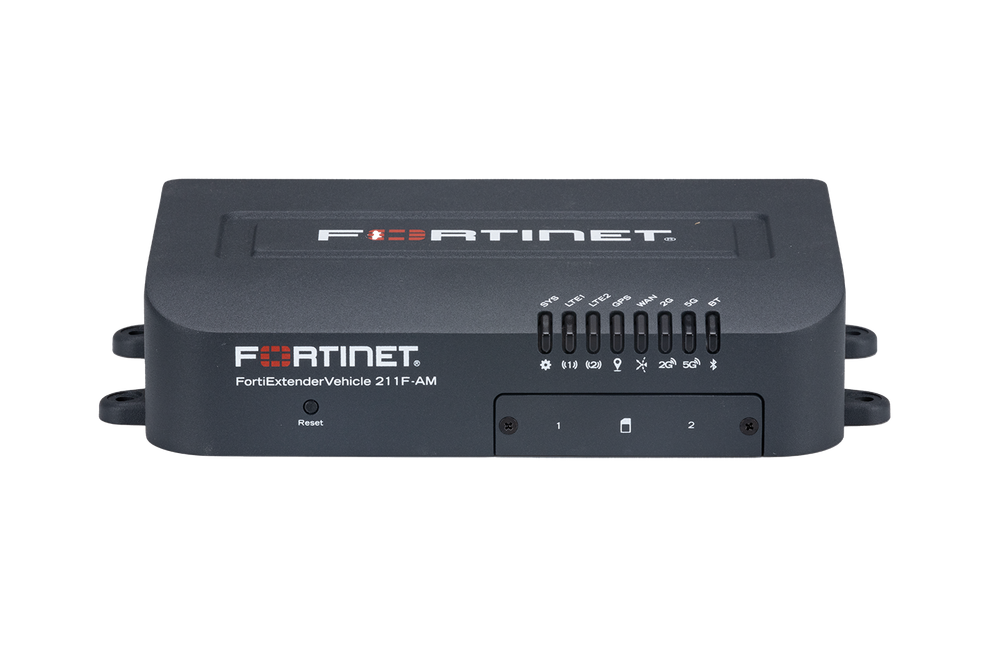
- Support Forum
- Knowledge Base
- Customer Service
- Internal Article Nominations
- FortiGate
- FortiClient
- FortiADC
- FortiAIOps
- FortiAnalyzer
- FortiAP
- FortiAuthenticator
- FortiBridge
- FortiCache
- FortiCare Services
- FortiCarrier
- FortiCASB
- FortiConverter
- FortiCNP
- FortiDAST
- FortiData
- FortiDDoS
- FortiDB
- FortiDNS
- FortiDLP
- FortiDeceptor
- FortiDevice
- FortiDevSec
- FortiDirector
- FortiEdgeCloud
- FortiEDR
- FortiEndpoint
- FortiExtender
- FortiGate Cloud
- FortiGuard
- FortiGuest
- FortiHypervisor
- FortiInsight
- FortiIsolator
- FortiMail
- FortiManager
- FortiMonitor
- FortiNAC
- FortiNAC-F
- FortiNDR (on-premise)
- FortiNDRCloud
- FortiPAM
- FortiPhish
- FortiPortal
- FortiPresence
- FortiProxy
- FortiRecon
- FortiRecorder
- FortiSRA
- FortiSandbox
- FortiSASE
- FortiSASE Sovereign
- FortiScan
- FortiSIEM
- FortiSOAR
- FortiSwitch
- FortiTester
- FortiToken
- FortiVoice
- FortiWAN
- FortiWeb
- FortiAppSec Cloud
- Lacework
- Wireless Controller
- RMA Information and Announcements
- FortiCloud Products
- ZTNA
- 4D Documents
- Customer Service
- Community Groups
- Blogs
- Support Forum
- Knowledge Base
- Customer Service
- Internal Article Nominations
- FortiGate
- FortiClient
- FortiADC
- FortiAIOps
- FortiAnalyzer
- FortiAP
- FortiAuthenticator
- FortiBridge
- FortiCache
- FortiCare Services
- FortiCarrier
- FortiCASB
- FortiConverter
- FortiCNP
- FortiDAST
- FortiData
- FortiDDoS
- FortiDB
- FortiDNS
- FortiDLP
- FortiDeceptor
- FortiDevice
- FortiDevSec
- FortiDirector
- FortiEdgeCloud
- FortiEDR
- FortiEndpoint
- FortiExtender
- FortiGate Cloud
- FortiGuard
- FortiGuest
- FortiHypervisor
- FortiInsight
- FortiIsolator
- FortiMail
- FortiManager
- FortiMonitor
- FortiNAC
- FortiNAC-F
- FortiNDR (on-premise)
- FortiNDRCloud
- FortiPAM
- FortiPhish
- FortiPortal
- FortiPresence
- FortiProxy
- FortiRecon
- FortiRecorder
- FortiSRA
- FortiSandbox
- FortiSASE
- FortiSASE Sovereign
- FortiScan
- FortiSIEM
- FortiSOAR
- FortiSwitch
- FortiTester
- FortiToken
- FortiVoice
- FortiWAN
- FortiWeb
- FortiAppSec Cloud
- Lacework
- Wireless Controller
- RMA Information and Announcements
- FortiCloud Products
- ZTNA
- 4D Documents
- Customer Service
- Community Groups
- Blogs
- Fortinet Community
- Blogs
- Path Traversal Vulnerability in ConnectWise Screen...
- Subscribe to RSS Feed
- Mark as New
- Mark as Read
- Bookmark
- Subscribe
- Printer Friendly Page
- Report Inappropriate Content
What is CVE-2024-1708?
CVE-2024-1708 is a critical path traversal vulnerability impacting ConnectWise ScreenConnect versions up to 23.9.7. This flaw enables attackers to manipulate file paths, potentially gaining unauthorized access to files or directories located outside the intended restricted directory. Exploitation of this vulnerability could lead to remote code execution or compromise sensitive data and critical systems.
The Importance of CVE-2024-1708
Path traversal vulnerabilities pose a significant threat because they allow attackers to navigate beyond the intended directory restrictions within web applications. By exploiting these vulnerabilities, attackers can access sensitive system files that are typically inaccessible through normal application usage. This could result in the disclosure of confidential information, compromise of system integrity, or facilitate subsequent attacks targeting other areas within the network infrastructure. Such exploits highlight the critical need for robust security measures to prevent and mitigate the impact of path traversal vulnerabilities across web applications.
How Critical is CVE-2024-1708?
CVE-2024-1708 is classified as a high-severity vulnerability, earning a CVSS score of 8.4. This rating reflects the significant risk posed by the flaw, which stems from inadequate validation of user-provided input and improper handling of file paths within ConnectWise ScreenConnect. Attackers can exploit this vulnerability by meticulously crafting malicious requests that bypass normal access controls, thereby gaining unauthorized access to files typically restricted from direct access. This exploit potential underscores the critical importance of implementing thorough input validation and robust file path handling mechanisms to mitigate such risks effectively.
Mitigating the Risks of CVE-2024-1708
To mitigate CVE-2024-1708, it is crucial to upgrade to ScreenConnect version 23.9.8 or newer, as these versions contain fixes specifically addressing the vulnerability. This update includes enhanced validation mechanisms and improved handling of file paths to prevent unauthorized access attempts through path traversal techniques.
Organizations are strongly advised to implement these updates promptly. Doing so is vital to safeguarding their systems and data from potential exploits targeting this vulnerability. Delaying the update leaves systems vulnerable to exploitation, which could lead to unauthorized access, data breaches, or compromise of critical infrastructure. Therefore, proactive installation of the patched versions is essential for maintaining robust security posture and protecting against emerging threats.
Fortinet Protection Assurance
Two critical vulnerabilities have been identified in ConnectWise ScreenConnect, each posing significant security risks.
The first vulnerability, CVE-2024-1709, represents an authentication bypass flaw that allows attackers to circumvent normal authentication mechanisms using an alternative path or channel. Exploiting this vulnerability can grant unauthorized administrative access to a ScreenConnect instance, potentially compromising sensitive data and system settings.
The second vulnerability, CVE-2024-1708, is a path traversal issue that enables attackers to manipulate file paths to execute remote code on affected systems. This could lead to further exploitation, such as planting malicious code or accessing confidential information.
According to Shadowserver, approximately 8,200 vulnerable instances of ConnectWise ScreenConnect were identified on the internet, with 643 IPs observed actively attacking these vulnerabilities. Given that ConnectWise remote-access software is widely used by Managed Service Providers (MSPs) to connect remotely to client systems, these vulnerabilities pose a significant risk. Attackers could potentially exploit compromised MSP systems to launch downstream attacks on client systems, planting malicious code or gaining unauthorized access.
To mitigate these risks, it is critical for organizations using ConnectWise ScreenConnect to apply security updates promptly. ConnectWise has released patches addressing these vulnerabilities, and organizations should ensure they are running version updates that include these fixes. Additionally, MSPs and organizations should review and strengthen their security practices around remote access tools to prevent and detect unauthorized access attempts effectively. Regular security audits and monitoring of network traffic can also help identify and mitigate potential threats before they are exploited.
FortiWeb's Web Application Firewall (WAF) offers comprehensive defense mechanisms against various web application vulnerabilities, including path traversal exploits. This advanced security solution is designed to detect and thwart malicious activities that attempt to exploit weaknesses in web applications.
Specifically, FortiWeb employs sophisticated detection techniques to identify attempts to manipulate file paths beyond authorized directories, a tactic commonly used in path traversal attacks. By analyzing incoming requests and responses, FortiWeb can distinguish legitimate user interactions from malicious attempts to access sensitive files or execute unauthorized commands.
In the context of path traversal vulnerabilities like those seen in ConnectWise ScreenConnect (CVE-2024-1708), FortiWeb's WAF acts as a critical line of defense. It intercepts and blocks malicious requests that could potentially lead to unauthorized access or data breaches. By enforcing strict access controls and validating input parameters, FortiWeb ensures that only authorized and safe interactions are permitted, thereby mitigating the risk of exploitation.
For organizations relying on web applications and remote access tools like ConnectWise ScreenConnect, integrating FortiWeb's WAF into their security architecture is essential. It not only enhances protection against known vulnerabilities but also provides proactive defense against emerging threats. Regular updates and configurations tailored to specific application environments further bolster security posture, helping organizations maintain resilience against evolving cyber threats.
Outbreak Protection Plan:
ConnectWise ScreenConnect Attack | Outbreak Alert | FortiGuard Labs
Conclusion
The discovery of CVE-2024-1708 in ConnectWise ScreenConnect underscores the need for continuous vigilance and prompt updating of software systems to protect against emerging threats. By applying the latest patches and utilizing advanced security solutions like FortiWeb, organizations can defend against the exploitation of such vulnerabilities.
The identification of CVE-2024-1708 in ConnectWise ScreenConnect highlights the critical importance of maintaining vigilant security practices and promptly updating software systems to mitigate emerging threats. This vulnerability, a path traversal issue, exposes systems to potential exploitation by allowing attackers to manipulate file paths and potentially execute unauthorized code.
To effectively safeguard against CVE-2024-1708 and similar vulnerabilities, organizations must prioritize timely patching and updating of their software. ConnectWise has released patches specifically addressing this vulnerability, which organizations should promptly apply to secure their systems. These updates often include fixes that improve file path validation and strengthen overall security measures against unauthorized access and data breaches.
In addition to patching, deploying advanced security solutions such as FortiWeb's Web Application Firewall (WAF) provides an additional layer of defense. FortiWeb is designed to detect and block attempts to exploit path traversal vulnerabilities and other web application weaknesses. By monitoring incoming traffic and scrutinizing requests for suspicious patterns, FortiWeb helps prevent malicious actors from leveraging vulnerabilities like CVE-2024-1708 to compromise sensitive data or execute malicious code.
Continuous monitoring, proactive security measures, and a robust incident response plan are essential components of a comprehensive cybersecurity strategy. They enable organizations to detect and respond to potential threats swiftly, minimizing the impact of security incidents on operations and safeguarding critical assets. By staying vigilant and leveraging advanced security technologies, organizations can effectively defend against evolving cyber threats and maintain the integrity and security of their IT environments.
For more detailed information on CVE-2024-1708 and best practices for securing your systems, please review the latest security advisories and ensure your systems are updated promptly.
You must be a registered user to add a comment. If you've already registered, sign in. Otherwise, register and sign in.
The Fortinet Security Fabric brings together the concepts of convergence and consolidation to provide comprehensive cybersecurity protection for all users, devices, and applications and across all network edges.
Copyright 2025 Fortinet, Inc. All Rights Reserved.
